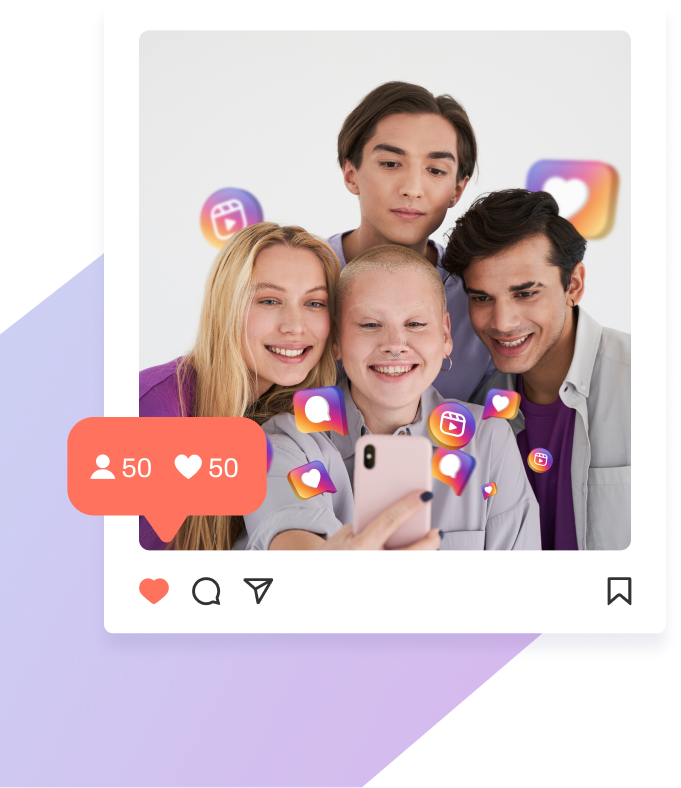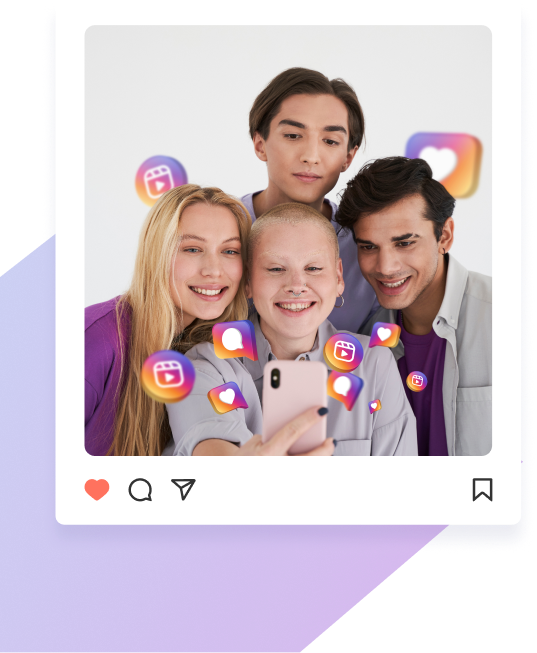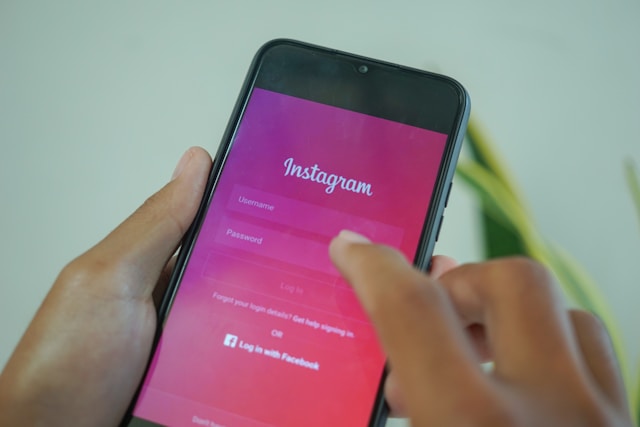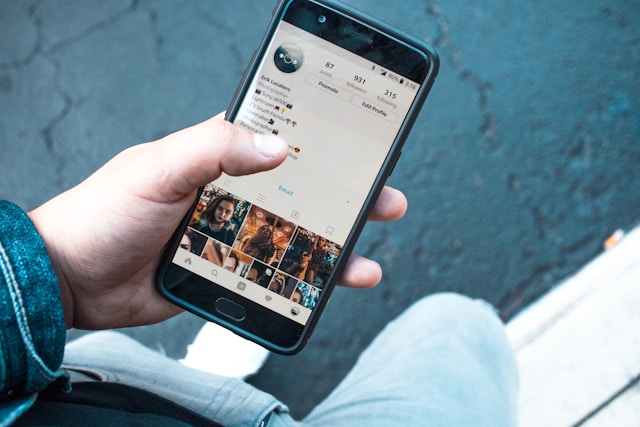Influencer Marketing Strategies 101—A Brief Guide
Marketing with influencers is akin to guerrilla marketing in the online media landscape. The foundational component of this marketing is the social media influencers and celebrities. Leveraging well-regarded personalities on social media has become a powerful strategy for numerous brands. This enhances brand visibility, connecting with target audiences and fostering conversions.
This blog explores what influencer marketing strategies are and provides practical tips and strategies to enhance its proficiency. Furthermore, we will discuss steps to refine your overall strategy in this domain.

What Are Influencer Marketing Strategies?
“Influencer marketing” means using someone’s status in your company to boost the business’s general name and image. Many influential people use their reach and power to start businesses or promote their products.
Integrating goods or services into the influencer’s content effortlessly makes it more than just advertising. This makes it seem more like a real suggestion than an attempt to sell something.
One distinct aspect of influencer marketing is the human connection between the influencer and their followers. Followers often perceive influencers as approachable and give significant weight to recommendations from these individuals. This is what makes this type of marketing work—it gives ads a level of sincerity.
There are different ways to use influencer marketing, such as working with macro or micro-influencers. This depends on the campaign’s outcomes, the target audience, and how real the campaign needs to be.
As a result of earning followers’ trust, influencers are good at this kind of marketing. Like social proof, their suggestions can sway people to buy your brand. Still, using influencers for marketing is more than just using someone’s picture to get more sales. It’s about making the person seem like a trustworthy expert in their area, which shapes perspective.

Importance of Influencer Marketing
According to Influencer Marketing Hub, the industry saw a peak of $16.4 billion in 2022, with a projected growth of $21.1 billion by 2023. Influencer marketing is now an important way for brands to connect authentically with their target audience. It differs from standard advertising because it uses a new way to capture people’s interest and interact with them.
Trust between influencers and their audience is key to how well local marketing works. The people who follow these influencers trust them because they are likable. When they suggest a product, it acts as social proof, which makes their followers more likely to buy it.
One great thing about this strategy is that it can reach many people. By using an influencer’s large following, brands can easily get their word out to more people. This works especially well with macro- and micro-influencers with large and small audiences, respectively.
Also, it emphasizes being real, which standard advertising often fails to do. For consumers wary of overly advertising content, putting their products into an influencer’s content makes the suggestion seem more real.
It’s easy to change how you use influencer marketing. Brands can choose influencers whose values are similar to their own. This agreement helps influencers seamlessly fit brand products into their content, boosting brand trust and building stronger public relationships.
With many types of influencers, brands can change how they work with influencers to fit their goals and budgets. Influencer marketing is a flexible toolkit brands can use to get around the complicated digital world. This is whether they want to make a company more well-known or connect with a small group of people.
Statistics on Influencer Marketing
In 2013, Instagram introduced ads, making featuring high-quality photos easier. Since then, many influencers have turned their social media following into full-time jobs.
A successful approach is crucial since 49% of customers trust recommendations from influencers.
In case you still have doubts, here are some statistics:
- According to Smart Insights, 51% of marketers and influencers have a role in attracting better-quality clients.
- Over the next 12 months, Linqia stated, 71% of companies want to allocate more funds to influencer marketing.
- According to Backlink, 42% of internet users use ad-blocking software; native advertisements and sponsored content are more successful.
- As per Nealschaffer, 89% of businesses say the ROI from influencer marketing is the same as or higher than from other platforms.
Brands can leverage influencers to expand their reach and convert leads by utilizing content and technological advancements.
Types of Instagram Influencers
Instagram has grown into a huge force in social media marketing. Instagram influencers create brand stories and engage users.
Macro-Influencers
Instagram macro-influencers usually have between 100,000 and 1 million followers. These influencers have authority in their niches. This makes them great partners for brands that want to balance reach and engagement. When brands work with macro-influencers, they can reach a wide range of people to market their products.
Micro-Influencers
A micro-influencer on Instagram usually has a smaller following, between 10,000 and 100,000 people. What makes them unique is how well they connect with their followers. Micro-influencers usually focus on certain areas and make content that speaks to their audience. Influencers with a smaller following may have less reach but often have more engaged followers. This makes them perfect for brands that want to connect with customers on a personal level.
Nano-Influencers
At the grassroots level, nano-influencers have fewer than 10,000 followers. They are great at making real relationships with their audience, even though they don’t have a lot of followers. Their content is often more personal and approachable, making them good for marketing in specific areas or groups. Brands often choose nano-influencers to connect with a smaller group of people.
Celebrity Influencers
On Instagram, you’ll find famous folks like artists, singers, and athletes who already have huge followings beyond the platform. Because famous people bring their fame to Instagram, brands have a chance to reach a wide audience. Acquiring these kinds of influencers is more challenging and expensive.

Effective Mediums & Formats for Influencer Marketing
Selecting the appropriate format and social media platforms is essential for effectively conveying your message to your audience. Brands can collaborate with influencers in various ways to create impactful projects, as digital channels are constantly evolving.
Instagram is a great medium for influencers due to its visual storytelling nature. Social media users can use Instagram Stories, IGTV, Reels, etc., to tell interesting stories about goods or services. They can connect with their followers in a personal and approachable way through comments and eye-catching visuals.
YouTube
YouTube is a great platform for brands that want to give in-depth information or demos. YouTube videos allow more in-depth reviews, lessons, and behind-the-scenes looks. This approach helps you connect with your audience deeply. Furthermore, it also works for a wide range of content, from unboxing new products to in-depth how-to tips.
TikTok
The short, creative videos TikTok has become famous for have added a new layer to influencer marketing. Within the platform’s short time limits, brands can work with stars to make interesting and fun videos. Brands targeting younger audiences can leverage TikTok’s casual and entertaining nature.
Blogs
Blogs are great for marketers and influencers because they let you write longer stories and more detailed content. Influencers can include ad links in their blog posts while writing about their experiences with a product or service. This structure works especially well for people who want to learn and think about it.
Podcasts
Podcasts give influencers a chance to have real talks with their followers. Influencers and brands can work together to host paid radio shows or add product comments to content already out there. Podcasts allow hosts to show off their knowledge and realistically connect with their viewers.

How To Build an Influencer Marketing Strategy
You must take calculated steps as a marketing influencer when making campaigns to get a good ROI against your marketing efforts. Here is how to build an influencer marketing strategy in easy steps:
- Make Your Campaign’s Goals Clear
Set SMART (Specific, Measurable, Achievable, Relevant, Time-bound) goals for your campaign. Clear goals are essential for measuring progress, whether reaching a wider audience, driving traffic, or increasing sales.
- Figure Out Who You Want To Reach
For influencer marketing to work, you need to reach the right people. Know your target audience to ensure that partnerships work with people interested in what you have to say. Instead of trying to reach everyone in your audience, focus on certain groups to get them more involved.
- Clarify Campaign Messaging and Brief
Clearly state your campaign’s message before reaching out to influencers. Align your marketing strategy with your goals, brand recognition, product buzz, or direct sales.
- Make a Budget That You Can Afford
Don’t make the usual mistake of not making a budget. Set aside money to cover the costs of influencer fees and the product or service to negotiate effectively.
- Find the Right Influencers and Reach Out
Understand the campaign goals that resonate with influencers’ audiences and choose the type of influencer you want to work with. When reaching out to influencers, carefully consider their skills and engagement rates to place your brand and campaign strategically.
- Track Your Campaign’s Performance
To figure out how well your campaign is doing, choose tracking methods that are easy to use. To monitor their posts, traffic, and sales, provide influencers with unique hashtags, personalized tracking links, or coupon codes. As part of the deal, ask them for statistics on their reach and interaction.
Best Influencer Marketing Strategies
A well-planned influencer campaign requires diligent preparation. Otherwise, you’re just giving away freebies or working with familiar faces. Consider these practical tactics to establish the best influencer marketing strategies.
- Create User Personas
For a successful marketing plan as an influencer, understand your audience by defining personas to attract new followers or engage current ones. Tailoring ads to specific groups of people can improve the effectiveness of marketing.
- Locate Potential Influencers
Discover industry influencers who align with your service or product. Find influential people by using Twitter analytics or another influencer marketing platform.
- Utilize Tools
Hootsuite and Sprout Social are two influencer marketing platforms that find influencers on different platforms. Using these tools, you can monitor planned posts and activities and evaluate your team’s effectiveness.
- Determine the Type of Influencer and Their Budget
Think carefully about your goals and financial limits to choose the kind of influencer that will help you achieve them. Various influencers with different reach and prices exist, ranging from nano to high-paid social media influencers.
- Plan the Management Strategy and Budget
Make sure to include influencer payouts and operational details in your detailed budget.
Understand that influencers need human involvement and constant improvement. Consider bringing in other resources, like photographers or videographers, to enhance their content.
- Communicate Confidentially
Start a natural conversation through their posts to start a conversation. It is more suitable to initiate talks about Instagram collaboration via direct messaging rather than public statements.

How To Measure the Impact of Influencer Marketing Strategy Template
Measure a campaign’s success to refine strategies and ensure a positive return on investment. Here’s a comprehensive guide on how to effectively measure the impact of your influencer marketing strategy template.
- Establish Clear Objectives
Before delving into measurement, clearly define your campaign objectives. Whether it’s increasing brand awareness, driving website traffic, or boosting sales, having specific and measurable goals is essential. The metrics you choose to measure should align with these objectives.
- Track Follower Growth
An increase in follower count indicates the campaign’s impact on expanding your brand’s reach. Track the growth of the influencer’s follower numbers during and after the campaign. This metric reflects the campaign’s effectiveness in attracting and engaging a broader audience.
- Engagement Metrics
Evaluate the engagement generated by the influencer’s content. Likes, comments, shares, and overall interactions provide insights into how well the audience responds. A high level of engagement signifies a connection between the influencer’s content and the audience’s interests.
- Reach and Impressions
Assess the reach and impressions of the influencer’s posts to gauge the extent of your brand’s exposure. This metric shows how many unique users viewed the content, giving a broader perspective on campaign visibility.
- Sentiment Analysis
Monitor social sentiment surrounding your brand during and after the influencer campaign. Analyzing comments and mentions can reveal the audience’s perception, helping you understand the overall impact on brand sentiment.
- Return on Investment (ROI)
Calculate the ROI by comparing the campaign’s cost with the generated value. If the goal is sales, evaluate the revenue generated against the campaign expenses. For awareness campaigns, consider factors like increased brand visibility and long-term benefits.
Pitfalls To Avoid in Instagram Influencer Strategy
Influencer marketing is a fast-paced field where one can easily fall prey to common mishaps. However, tackling these key issues can ensure your Instagram influencer strategy succeeds.
- Not Setting Clear KPIs And Goals
Before starting to work with influencers, you should be clear about what your strategy is trying to achieve. This makes selecting the right influencers easier, establishing clear success goals, and aligning the brand and influencer.
- Prioritizing the Number of Followers Against Engagement
Don’t mistake many followers for boosted engagement. Choose influencers who prioritize quality over quantity and have a dedicated and active following. To determine how influential and popular someone is, look at their participation data, comments, interactions, and past results.
- Not Doing Enough Research on the Influencer
When choosing influencers to work with, conduct a thorough investigation beforehand. Failure to do so can result in loss of time and money. When choosing an influencer, consider the audience, engagement rates, content style, sincerity, and previous brand partnerships.
- Limiting the Influencer’s Ability to Think Outside the Box
Even though detailed plans are important, they shouldn’t get in the way of creativity. Let influencers put their spin on things by offering direction without being overbearing. Trust that they know how to make content that speaks to their viewers and builds a social media presence.
- Paying Attention to the Wrong Metrics
When you look at the effects of influencer marketing, don’t just look at sales and leads. Track participation, brand recognition, follower growth, and leads to measure your campaign’s success.

Maximize Your Influencer Marketing With Path Social
After formulating a plan, the next steps involve testing campaigns and achieving commercial outcomes. By implementing the right strategy, you can effectively connect with your audience and maximize your chances of success.
Influencer marketing isn’t going anywhere, but the best ways to use it are always changing. As the market changes constantly, brands need strong UGC marketing strategies to maintain their audience’s interest.
If you are looking for a third-party company for building influencer marketing strategies, consider working with Path Social. Path Social is a dependable Instagram service that offers a fresh take on growing your following. With our in-house network of influencers and an AI-targeting algorithm, we connect you with real, interested individuals. So, what are you waiting for? Start growing and gaining Instagram followers today with Path Social!


Want Free Instagram
Followers?
Let our AI targeted organic growth work for you for free
Get Free Instagram Followers







